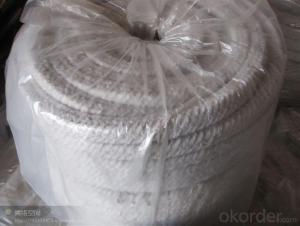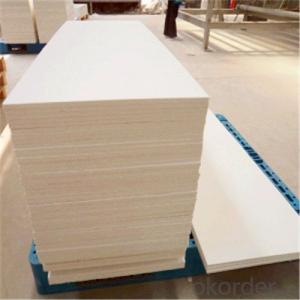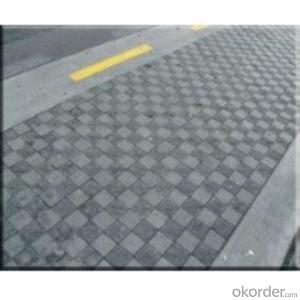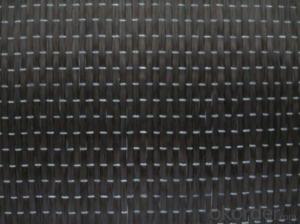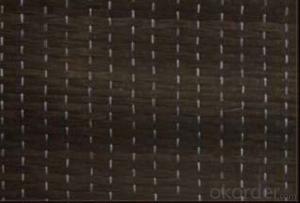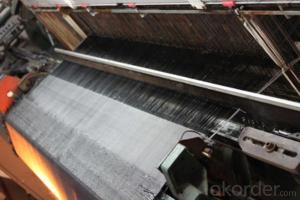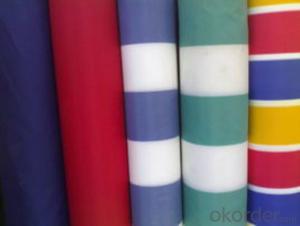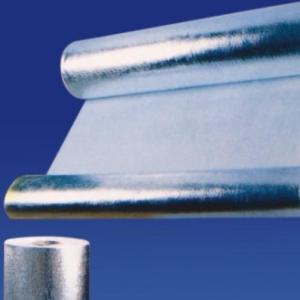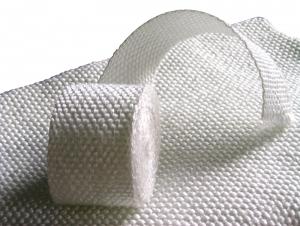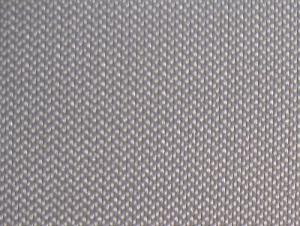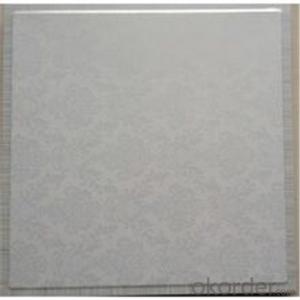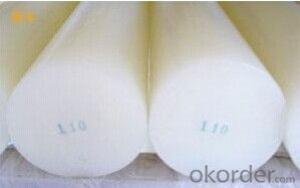Fire Ceramic Fibre Round & Square Ropes 2015
- Loading Port:
- Shanghai
- Payment Terms:
- TT OR LC
- Min Order Qty:
- 10 m.t.
- Supply Capability:
- 100 m.t./month
OKorder Service Pledge
OKorder Financial Service
You Might Also Like
Quick Details
| Place of Origin: | China (Mainland) | Application: | Refractory | Working Temperature: | 450,1000,1260 |
| Fiber Diameter: | 15,20 | Model Number: | Fabric,Round woven rope, | Organic content: | ≤15 |
| Bulk Density (Kg/m3):: | 500±30 |
Packaging & Delivery
| Packaging Detail: | pp woven bag or carton box |
| Delivery Detail: | 25days |
Specifications
high quality bio soluble ceramic blanket
Specifications
Fine tensile strength
Fine high-temperature strength
Good at heat insulation
Low heat conduction ration
Fine tensile strength
Fine high-temperature strength
Good at heat insulation
Low heat conduction ration
PROCESSING:
Fibre Sennit: It includes core rope and outer warp. The core rope contains aluminosilicate fibre yarn and blanket strip etc. The outer wrap is weaved by using glass fibre or refractory alloy silk according to temperature and condition used.
Fibre wringed rope: It is wringed by multilayer aluminosilicate fibre silk which are strengthen by glass fibre and refractory alloy silk.
Fibre quit: It is bound up by glass silk fibre fabric using aluminosilicate disperse cotton as raw material. According to temperature and condition used, it can be used at the condition which can not be used by other aluminosilicate products.
TECHNICAL SPECIALITY:
Good heat resistance. The ceramic fibre fabric, which strentgth is increased by refractory alloy silk , can be used at 1000°Ccontinuously.
High quality of antacid, oil resistance and water vapor resistance
High quality of electric insulation
Fine tensile strength
Fine high-temperature strength
Good at heat insulation
Low heat conduction ration
Innocuity and harmless, not polluting environment.
APPLICATION:
Heat insulation for high-temperature pipeline and container
Kiln screen and shade
Receive spark reel door
Seal of kiln and stove door
High-temperature safety
Fireproofing coil door
Making compound materials
Safety of cable of fuel pipeline
Bag and cover for fireproofing
SPECIFICATIONS FOR THE FIBRE ROPE,STRAP,QUILT,FIBERGLAS FABRIC OF ALUMINOSILICATE:
Name | Fabric | Strap | Round woven rope | Square woven rope | Yarn twist rope | Topes twisted rope | |
Classfication Temperature(°C) | 1260 | ||||||
Density(Kg/m3) | 500±30 | ||||||
Organic content | ≤15 | ||||||
Suggest Using Temperature(°C) | 450 (Glass fiber reinforced) 1000 (Heat resistance alloy silk reinforced) | ||||||
Burning amount (800°C)% | 12±2 | 12±2 | 12±2 | 12±2 | 12±2 | 8-10 | |
Size(mm) | 30*1*2 30*1*3 | 30*20*2.3 | φ15 φ20 | 20*20 | φ15 φ20 | φ20 | |
- Q:What are the ingredients of glass and plastics?
- The main raw materials for the production process of glass are glass forming bodies, glass adjusting materials and glass intermediates, and the rest are auxiliary raw materials. The main raw materials, intermediate oxide and oxide to network oxides into the glass forming network; auxiliary materials including clarifying agent, fluxing agent, emulsifying agent, coloring agent, bleaching agent, oxidizing agent and reducing agent etc..Glass production process mainly includes: (1) raw material pretreatment. The massive raw materials are crushed to damp the raw materials, and the iron containing materials are treated with iron to ensure the quality of the glass. Preparation of batch. Melting system. The glass batch is heated in a bath or crucible furnace at high temperature to form a liquid glass which is uniform, free of bubbles and conforms to the molding requirements. Shaping. The processing of liquid glass into desired shapes, such as flat plates, various vessels, etc.. Heat treatment. Through annealing, quenching and other processes, to eliminate or produce glass internal stress, phase separation or crystallization, and change the state of glass structure.
- Q:How do glass fiber textiles perform in terms of dimensional stability?
- Glass fiber textiles have excellent dimensional stability, meaning they maintain their shape and size even under various temperature and humidity conditions. This characteristic makes them highly reliable for applications where dimensional accuracy is crucial, such as in the construction industry or for manufacturing precision components.
- Q:Can glass fiber textiles be used for medical applications?
- Glass fiber textiles have the ability to be utilized in medical applications. These textiles are created by weaving together fine strands of glass fibers to produce a fabric. There are several qualities of these textiles that make them appropriate for medical use. Firstly, glass fiber textiles are biocompatible, which means they are unlikely to cause any negative reactions when they come into contact with the human body. This characteristic is crucial for medical applications as it guarantees that the textile will not cause any harm or discomfort to the patient. Secondly, glass fiber textiles possess resistance to chemicals and can endure processes of sterilization, such as autoclaving. This makes them ideal for use in medical environments where maintaining sterility is of utmost importance, such as surgical gowns, drapes, or wound dressings. Moreover, glass fiber textiles exhibit exceptional strength and durability, making them appropriate for use in medical devices and implants. For instance, they can be utilized to reinforce prosthetic limbs, create orthopedic braces, or serve as a component in surgical sutures. Additionally, glass fiber textiles possess thermal insulation properties, which can be advantageous in medical applications. They can be employed as insulation in medical devices that are sensitive to temperature or in the construction of incubators and thermal blankets for premature infants. In conclusion, glass fiber textiles can be employed in various medical applications due to their biocompatibility, resistance to chemicals, strength, durability, and thermal insulation properties. Their adaptability and suitability for medical use make them a viable choice for enhancing healthcare and improving patient outcomes.
- Q:Can glass fiber textiles be used in spacecraft components?
- Yes, glass fiber textiles can be used in spacecraft components. Glass fiber textiles, also known as fiberglass, have several properties that make them suitable for use in space applications. Firstly, glass fiber textiles have excellent strength-to-weight ratio, which is a crucial factor when designing lightweight spacecraft components. The high strength of the fibers allows them to withstand the extreme conditions of space travel, including the intense vibrations during launch and the vacuum of space. Secondly, glass fiber textiles have excellent thermal insulation properties. In space, temperatures can vary drastically, ranging from extreme cold to intense heat. Glass fiber textiles can provide insulation against these temperature fluctuations, helping to protect the spacecraft components and maintain their functionality. Additionally, glass fiber textiles are known for their resistance to corrosion and chemicals. This property is essential in space, where components may be exposed to different types of fuels, oxidizers, and other potentially corrosive substances. Moreover, glass fiber textiles are electrically insulating, which is essential for the safety and proper functioning of spacecraft components. This property helps to prevent electrical shorts and interference, ensuring the reliability of the spacecraft systems. Lastly, glass fiber textiles are relatively easy to manufacture and can be molded into complex shapes, making them versatile for various spacecraft components. They can be used in the construction of satellite structures, insulation panels, antenna reflectors, and other critical parts. In conclusion, glass fiber textiles can indeed be used in spacecraft components due to their high strength-to-weight ratio, excellent thermal insulation properties, resistance to corrosion and chemicals, electrical insulation, and versatility in manufacturing.
- Q:Are glass fiber textiles resistant to color fading?
- Yes, glass fiber textiles are generally resistant to color fading.
- Q:Can glass fiber textiles be used in reinforcement?
- Yes, glass fiber textiles can be used in reinforcement. Glass fiber textiles are commonly used as reinforcement materials in various industries such as construction, automotive, and aerospace. They offer excellent strength, durability, and resistance to corrosion, making them ideal for reinforcing structures, composite materials, and other applications where enhanced strength and stability are required.
- Q:What are the different reinforcement options for glass fiber textile?
- There are several different reinforcement options for glass fiber textile, depending on the desired strength and performance characteristics. 1. Woven Fabric: This is the most common reinforcement option for glass fiber textile. Woven fabrics are created by interlacing glass fibers in a specific pattern, typically in a plain or twill weave. Woven fabrics provide good strength and stiffness, and are widely used in applications such as composites, reinforcements for concrete, and insulation materials. 2. Non-Woven Fabric: Non-woven fabrics are made by bonding or felting glass fibers together without the need for weaving. This reinforcement option provides excellent uniformity and dimensional stability, making it suitable for applications like filtration media, geotextiles, and thermal insulation. 3. Chopped Strand Mat (CSM): Chopped strand mat is made by randomly aligning short glass fibers in a matrix of binder material. CSM provides good strength and is easy to handle and mold into complex shapes. It is commonly used in applications such as boat building, automotive parts, and corrosion-resistant tanks. 4. Continuous Roving: Continuous roving consists of untwisted glass fibers bundled together. It offers high tensile strength and is used for applications that require exceptional strength, such as wind turbine blades, pressure vessels, and aerospace components. 5. Knitted Fabric: Knitted fabrics are created by interlocking loops of glass fibers. They provide good flexibility and conformability, making them suitable for applications that require stretchability, such as sports equipment, medical products, and clothing. 6. Multiaxial Fabrics: Multiaxial fabrics are made by arranging glass fibers in multiple layers or orientations, which can include unidirectional, biaxial, or triaxial layers. This reinforcement option offers tailored mechanical properties, improved strength in specific directions, and enhanced impact resistance. It is commonly used in applications like aerospace structures, automotive parts, and high-performance sports equipment. These reinforcement options provide a range of choices for manufacturers and designers to select the most suitable option based on their specific requirements for strength, flexibility, conformability, and other performance characteristics.
- Q:Can glass fiber textile be used in architectural applications?
- Glass fiber textile, commonly referred to as fiberglass, holds potential for use in architectural applications. This material possesses numerous advantages that cater to the field of architecture. It is lightweight, sturdy, long-lasting, and exhibits exceptional thermal and acoustic insulation properties. Due to these qualities, it can be employed in a variety of architectural functions, including cladding, roofing, partition walls, and facades. Architects can utilize glass fiber textile as a reinforcing agent in composite panels, providing structural reinforcement and augmenting the overall strength of a building. Furthermore, it can be shaped and molded into diverse forms, enabling the creation of inventive and original architectural designs. Moreover, the resistance of glass fiber textile to corrosion, moisture, and ultraviolet radiation renders it an optimal choice for exterior applications. It can endure severe weather conditions and necessitates minimal maintenance, offering a significant advantage for long-term architectural projects. Additionally, the implementation of glass fiber textile can enhance energy efficiency within buildings. Its exceptional insulation properties effectively reduce heat transfer, ultimately resulting in diminished energy consumption for heating and cooling purposes. This, in turn, contributes to sustainability endeavors while simultaneously lowering overall energy expenses. To summarize, glass fiber textile stands as a fitting material for architectural applications due to its lightweight nature, robustness, durability, insulation properties, and corrosion resistance. Its versatility and ability to enhance energy efficiency render it a popular selection for a wide range of architectural projects.
- Q:How does glass fiber textile perform in terms of UV resistance?
- Glass fiber textile performs exceptionally well in terms of UV resistance. Glass fibers are naturally resistant to UV degradation, making them highly durable and long-lasting when exposed to sunlight. Unlike other materials, glass fibers do not weaken or deteriorate when exposed to UV rays. This makes glass fiber textile an excellent choice for outdoor applications, such as outdoor furniture, awnings, and sunshades. Additionally, glass fiber textile retains its structural integrity and appearance even after prolonged exposure to sunlight, ensuring that it remains visually appealing and functional for extended periods.
- Q:Can glass fiber textiles be used for making sports apparel or activewear?
- Yes, glass fiber textiles can be used for making sports apparel or activewear. Glass fiber textiles, also known as fiberglass, are lightweight and have excellent strength-to-weight ratio, making them suitable for athletic wear. They provide durability, flexibility, and moisture-wicking properties, which are essential for sports and active pursuits. Additionally, glass fiber textiles offer thermal insulation, making them suitable for different weather conditions. However, it is important to note that glass fiber textiles can be less comfortable and breathable compared to other materials commonly used in sports apparel, such as synthetic fibers or natural fabrics. Furthermore, glass fibers can be abrasive and may cause skin irritation if not properly treated or blended with other materials. Therefore, while glass fiber textiles can be used for making sports apparel or activewear, it is crucial to consider the specific requirements and preferences of athletes or individuals using the products.
1. Manufacturer Overview |
|
|---|---|
| Location | |
| Year Established | |
| Annual Output Value | |
| Main Markets | |
| Company Certifications | |
2. Manufacturer Certificates |
|
|---|---|
| a) Certification Name | |
| Range | |
| Reference | |
| Validity Period | |
3. Manufacturer Capability |
|
|---|---|
| a)Trade Capacity | |
| Nearest Port | |
| Export Percentage | |
| No.of Employees in Trade Department | |
| Language Spoken: | |
| b)Factory Information | |
| Factory Size: | |
| No. of Production Lines | |
| Contract Manufacturing | |
| Product Price Range | |
Send your message to us
Fire Ceramic Fibre Round & Square Ropes 2015
- Loading Port:
- Shanghai
- Payment Terms:
- TT OR LC
- Min Order Qty:
- 10 m.t.
- Supply Capability:
- 100 m.t./month
OKorder Service Pledge
OKorder Financial Service
Similar products
New products
Hot products
Hot Searches
Related keywords

